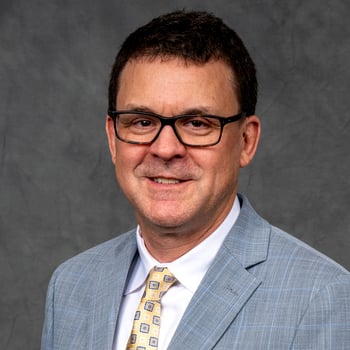Finding Gratitude Amid Chaos
This holiday season, shift your focus from what separates us to what connects us — kindness, compassion and belonging to something bigger than ourselves.
Read more
From the Chair of the Board of Chancellors

ACR members, staff and other invited guests gathered in May in Washington, DC, for the College’s annual Meeting. ACR 2025 combined some familiar agenda items with fresh ideas — and a few new twists.
We all know that a successful annual meeting doesn’t just happen. It takes far more planning, prepping and real-time pivots than many attendees realize. With a primary goal of listening to our members’ needs before acting on assumptions, the College’s leadership raised the bar in presenting what ACR has done and continues to do to address the challenges of today’s radiology landscape. In other words, members don’t have to go at it alone — ACR has your back!
The ACR Council is only in session three days a year, but the Council Steering Committee — as one of its jobs in representing the Council during the other 362 days of the year — plans and orchestrates the ACR Annual Meeting. This year, the Council Steering Committee focused on the current state of radiology (including radiation oncology, interventional radiology, medical physics and nuclear medicine) while keeping our historical successes and challenges top of mind. A key goal at this year’s gathering was to emphasize and remind our members of ACR’s core goal: ACR is and will remain indispensable to radiologists.
Many of us attend annual meetings to see friends, earn CME, learn about radiology advocacy efforts, represent ACR chapters and influence ACR policies. While ACR 2025 certainly delivered on those fronts, the annual event is fundamentally a business meeting. It is where our chapters’ councilors, representing our members, make decisions about future policies that will bolster radiologists’ interests and positively impact our practices. In addition, the annual meeting is where we accomplish things our bylaws require, including the annual Council meeting, receiving and reviewing reports from our officers and electing new ACR leaders.
It is probably safe to assume that many attendees face similar daily challenges, especially the “hamster wheel” of too much work and too little time. And because our clinical volumes continue to climb, radiologists have less time and energy available for important non-clinical tasks that must be addressed in our practices, in our health systems and at state and national levels. These activities include lobbying for fair reimbursement, monitoring scope-of-practice legislation and mitigating regulatory burdens that are time-consuming and potentially overwhelming to busy radiologists. ACR 2025 focused on these shared challenges and how ACR and its volunteer leaders are tackling these issues and supporting radiologists’ futures.
ACR 2025 focused on these shared challenges and how ACR and its volunteer leaders are tackling these issues and supporting radiologists’ futures.
Finding Gratitude Amid Chaos
This holiday season, shift your focus from what separates us to what connects us — kindness, compassion and belonging to something bigger than ourselves.
Read more
Decoding the 2026 Medicare Physician Fee Schedule Final Rule
While the final version of the rule delivers modest nominal increases, the efficiency adjustment introduces challenges for radiologists.
Read more
JACR: Advancing Radiology Through Education and Training
The newest focus issue of the journal provides insight into equipping trainees with the knowledge and skills needed to succeed in the current healthcare environment.
Read more